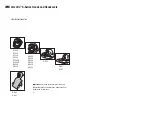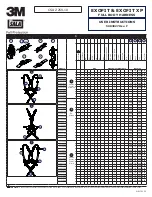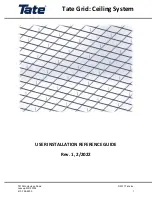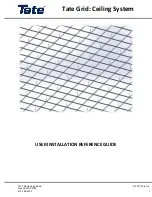
Using the Guard Terminal
For basic insulation tests and where there is little possibility of surface
leakage affecting the measurement, it is unnecessary to use the guard
terminal.
In cable testing, there may be surface leakage paths across the insulation
between the bare cable and the external sheathing due to the presence of
moisture or dirt. Where it is required to remove the effect of this leakage,
particularly at high testing voltages, a bare wire may be bound tightly around
the insulation and connected via the third test lead to the guard terminal ‘G’.
The guard terminal is at the same potential as the negative terminal. Since the
leakage resistance is effectively in parallel with the resistance to be
measured, the use of the guard causes the current flowing through surface
leakage to be diverted from the measuring circuit. The instrument therefore
reads the leakage of the insulator, ignoring leakage across its surface.
SPECIFICATION
Insulation Ranges
Measuring Ranges:
0 - 20,000 M
Ω
at all test voltages
Test Voltages (d.c.):
100 V; 250 V; 500 V; 1kV on open circuit
Test V. Accuracy:
±5%
Short Cct. Current:
220 µA nominal on all ranges
Accuracy:
±3% of scale length on a 3.08 inch arc length
Low resistance Range
Measuring Range:
0 - 5000
Ω
Open Cct. Voltage:
3 V ± 5%
Short Cct. Current:
30 mA ± 10%
Accuracy:
±3% of scale length on a 3.08 inch arc length
Default Voltage measurement
Range:
0 - 600 V a.c.
Accuracy:
±2.5% of scale length
General Specifications
Overload rating:
The
210170
is protected for connection to Power
distribution systems up to 300 V Line - Ground, and
500 V Line - Line for Installation Category
III
*
.
Terminal Characteristics
Leakage path
to ‘+’ve
terminal
to ‘G’
terminal
to ‘-’ve
terminal
Tightly bound bare wire
www.
GlobalTestSupply
.com
Find Quality Products Online at:























